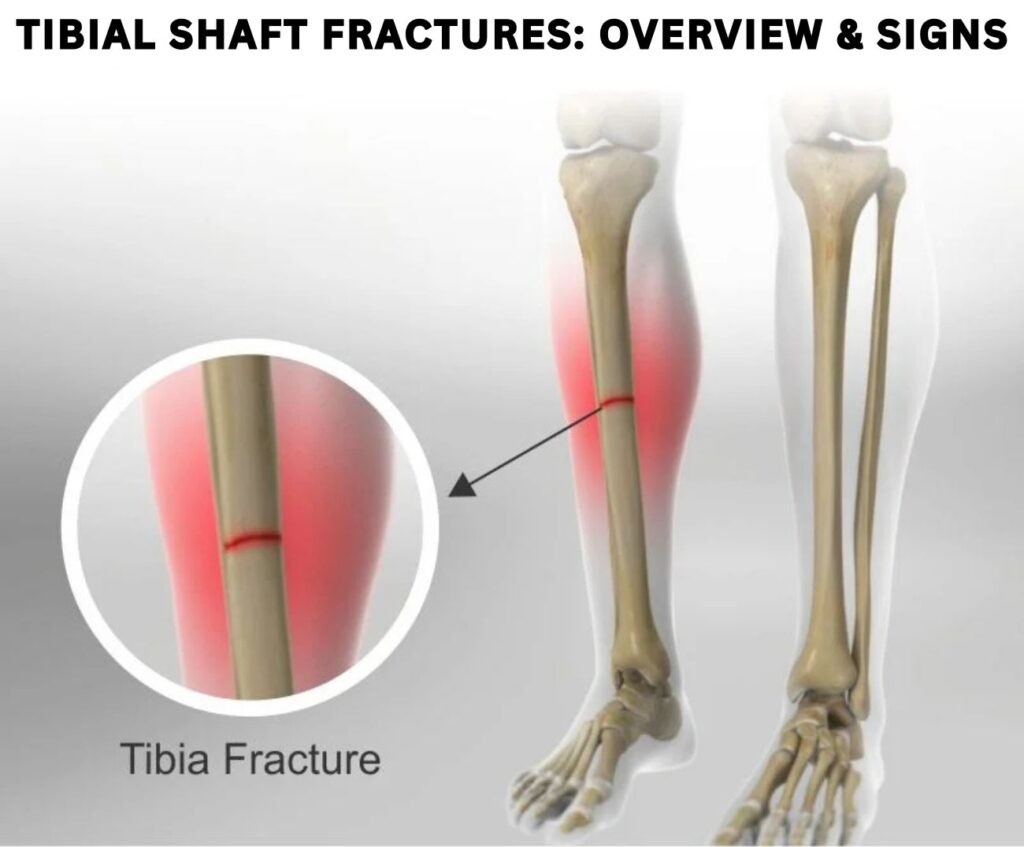
The tibia, commonly known as the shinbone, is one of the most important bones in the human body. Located between the ankle and the knee, it carries most of our body’s weight and plays a crucial role in walking, running, and everyday movement. Because of its load-bearing function, the tibia is also one of the bones most prone to fractures.
ANATOMY OF THE TIBIA:
The tibia is the larger of the two bones in the leg, positioned between the knee and the ankle. It has a hollow canal filled with bone marrow and a strong outer layer known as the cortex, which provides strength.
◼️Tibial plateau – top part of the tibia near the knee
◼️Tibial plafond – bottom part of the bone near the ankle.
◼️Tibial shaft – the central part where most of the fractures occur.
WHAT IS THE TIBIAL SHAFT?
The tibial shaft is the middle portion of the tibia, lying between the flared ends just below the knee (tibial plateau) and just above the ankle (tibial plafond). Unlike the ends, which are broader and flatter, the shaft is more triangular in shape.
SIGNS OF TIBIAL SHAFT FRACTURES:

Fractures of the tibial shaft typically occur with substantial traumatic injuries. Common signs of these fractures include:
◼️Sharp pain in the shin.
◼️Visible deformity of the leg.
◼️Bruising and swelling around the shin.
◼️Inability to bear weight on the leg.
Because such injuries often occur with other trauma, doctors usually examine the entire body to rule out
hidden injuries.
For more information, talk to a healthcare provider.
If you have any questions about TIBIAL SHAFT FRACTURES, Please feel free to leave a comment.
Do share this blog with your friends and family!
